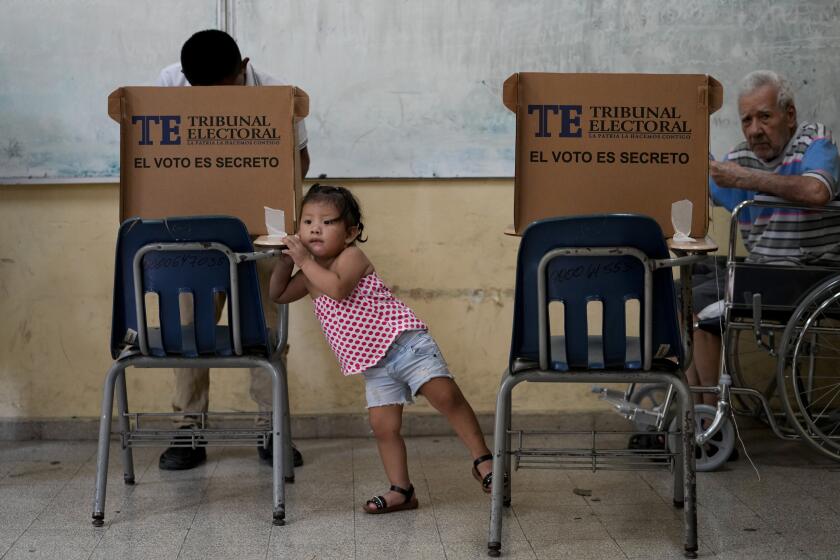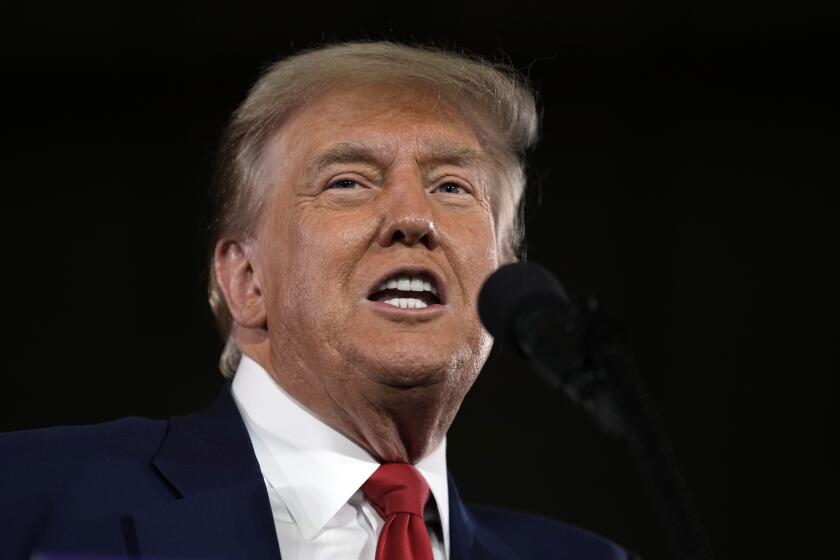Once-Green Valleys in Indonesia Devastated by Firms, Fortune Seekers in Gold
Gold-crazed humanity has arrived in this once-lush valley, ripping it up with makeshift drilling rigs and muddy shantytowns.
Gripped by gold fever, fortune seekers and squatters dotting the hinterlands of Indonesia not only risk disease and injury but have ignored exclusive claims contracted to international mining companies.
A confrontation looms between the companies and squatters, to whom the gold rush is a slim chance to escape grinding poverty.
“When we find gold, we’ll have everything,” 10-year-old Nanang said, not stopping to lift his eyes from the mud-filled pan that he scoured for specks of the precious metal. “But now I can’t even stop to play.”
Oblivious to the stench of garbage mixed with human waste, Nanang and his five brothers and sisters crouch in the sun every day. Sometimes, after Nanang washes away the layers of mud with water as his mother taught him, a few golden flecks sink to the bottom.
Predictions by geologists that the country will move to third place in worldwide gold output, following South Africa and the Soviet Union, ignited the stampede.
And gold deposits, discovered in the once-inaccessible jungles of the island of Kalimantan, have lured international corporations as well as 100,000 poachers.
An overhaul of Indonesia’s mining law sparked the interest of overseas investors. Rules of ownership and equity permit up to 85% initial foreign investment for the first five years.
But the patience of the mining companies is waning, raising the threat of confrontation. “We don’t mind a few hundred local people panning for gold,” said Laurie Whitehouse, exploration manager of Pelsart Resources. “But we didn’t expect anything like this. It’s an environmental disaster.”
In their zeal for gold, the companies and the camp-followers have devastated the valley at the rugged, mountainous Pontain site.
They have hacked down trees, polluted streams and punctured the land with drills, replacing the lush forest with a garbage-filled ramshackle town, all within the Australian company’s legal contract area in southern Kalimantan.
The sound of chain saws marks the arrival of each new gold digger, who hacks down more trees for a rickety shelter. With the population of the squalid community at 2,000, Whitehouse is fearful of a malaria outbreak when the rainy season begins in November.
The number of illegals has soared to 42,000 at the three Pelsart operations on the island and another 28,000 are clumped at locations contracted to other firms.
Some of the workers are paid daily wages by wealthy, ethnic Chinese who, according to the companies, illegally smuggle the gold to Hong Kong.
“I don’t know what happens to it after it leaves,” says a 50-year-old man named Brakin. “I’m making 4,000 rupiahs, (about $2.60) more than I ever earned raising sugar cane.”
The companies claim they are losing tens of thousands of dollars a month because the settlers are preventing legitimate miners from gaining access to the areas. “We can’t even carry out exploratory work to determine whether the occupied area is worth mining,” Whitehouse said.
Officials of the Duval Corp. of Indonesia, a subsidiary of American Pennzoil Co., contend that they have waited long enough to move into their already tested, gold-laden land at Kerikil in central Kalimantan, the domain of 3,000 zealous squatters.
“We are offering them another area which has some gold near the surface but not the deep, significant deposits we’re after,” said Mark Miller, vice president of development.
More to Read
Start your day right
Sign up for Essential California for news, features and recommendations from the L.A. Times and beyond in your inbox six days a week.
You may occasionally receive promotional content from the Los Angeles Times.






